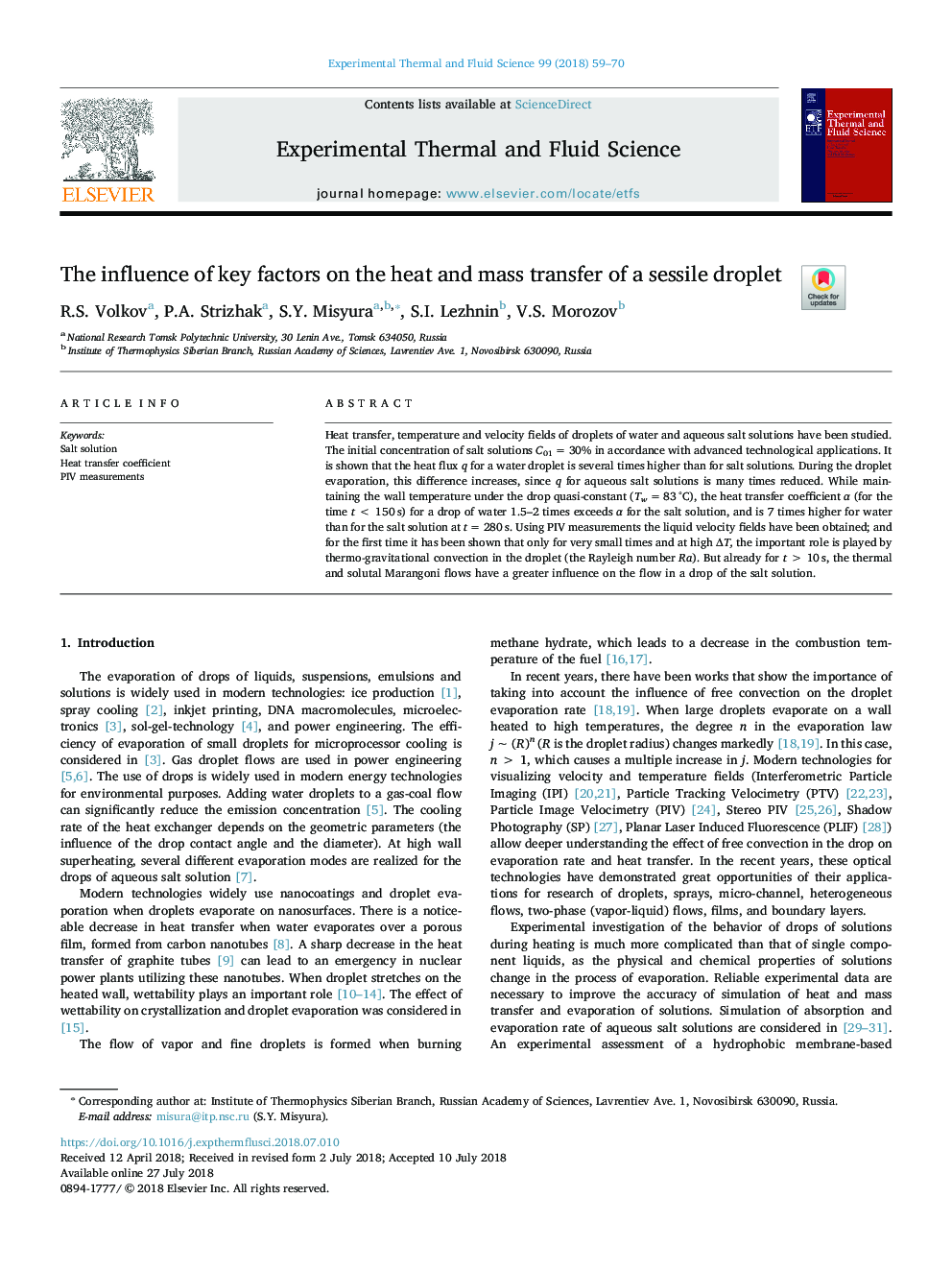| Article ID | Journal | Published Year | Pages | File Type |
|---|---|---|---|---|
| 7051436 | Experimental Thermal and Fluid Science | 2018 | 12 Pages |
Abstract
Heat transfer, temperature and velocity fields of droplets of water and aqueous salt solutions have been studied. The initial concentration of salt solutions C01â¯=â¯30% in accordance with advanced technological applications. It is shown that the heat flux q for a water droplet is several times higher than for salt solutions. During the droplet evaporation, this difference increases, since q for aqueous salt solutions is many times reduced. While maintaining the wall temperature under the drop quasi-constant (Twâ¯=â¯83â¯Â°C), the heat transfer coefficient α (for the time tâ¯<â¯150â¯s) for a drop of water 1.5-2 times exceeds α for the salt solution, and is 7 times higher for water than for the salt solution at tâ¯=â¯280â¯s. Using PIV measurements the liquid velocity fields have been obtained; and for the first time it has been shown that only for very small times and at high ÎT, the important role is played by thermo-gravitational convection in the droplet (the Rayleigh number Ra). But already for tâ¯>â¯10â¯s, the thermal and solutal Marangoni flows have a greater influence on the flow in a drop of the salt solution.
Related Topics
Physical Sciences and Engineering
Chemical Engineering
Fluid Flow and Transfer Processes
Authors
R.S. Volkov, P.A. Strizhak, S.Y. Misyura, S.I. Lezhnin, V.S. Morozov,
